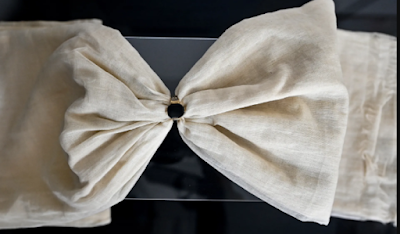Introduction
Dhaka Muslin, a fabric so fine and delicate that it was said to be “woven air,” once stood as one of the most celebrated textiles in the world. This iconic fabric, which originated in Dhaka (now the capital of Bangladesh), symbolized luxury and prestige and was adored by the royalty and aristocrats of Europe and beyond. The history of Muslin is as rich and fascinating as the fabric itself, intertwined with the legacy of Bengal’s artisans, European colonization, and the industrial revolution. However, despite its grandeur, Muslin faded into obscurity, its craft almost forgotten.
The Birth and Glory of Dhaka Muslin
Muslin’s history dates back to ancient times, flourishing during the Mughal era in the 17th and 18th centuries. This fine cotton fabric, characterized by its exceptional softness and transparency, was primarily made from a rare type of cotton plant called Gossypium arboreum var. neglecta, found only on the riverbanks of the Brahmaputra in Bengal. The name “Muslin” is believed to have originated from the city of Mosul in present-day Iraq, where the fabric was introduced to the Western world.
Dhaka became synonymous with Muslin for its superior weaving techniques, which required exceptional skill and patience. The fabric’s fineness was measured in ‘counts’—the higher the count, the finer and more valuable the fabric. Some Dhaka Muslins had thread counts reaching 1,200, a feat unmatched even by modern weaving technology.
Muslin from Dhaka was classified into several types based on quality and intended use, such as:
- Malmal – The finest and most delicate Muslin, reserved for nobility.
- Jhuna – A coarser, yet still exquisite variety used in traditional clothing.
- Abrawan – Literally translating to “running water,” this variety was so sheer that it was almost invisible in water.
- Shabnam – Also known as “evening dew,” a lighter variant used for veils and scarves.
Muslin in the Mughal Era
During the Mughal period, Dhaka Muslin was a prized commodity. The Mughal emperors, particularly Emperor Aurangzeb, were patrons of Muslin and encouraged the industry. The royal court demanded the best of Bengal’s muslin, and the artisans, known as tantis, created masterpieces of ethereal quality. The Mughal aristocracy wore Muslin garments, and it was a status symbol, a fabric so expensive and rare that it was used only for the finest occasions.
Foreign traders, especially the British East India Company, recognized its value and started exporting it to Europe, where it was sought after by the elite for its delicate texture and elegant appeal. Dhaka Muslin was known for its “moonlight on dew” texture and was used to create dresses for queens and noblewomen.
The Scope of Dhaka Muslin in Global Trade
From the 17th to the early 19th century, Dhaka Muslin dominated international trade. Its global fame spread as far as Rome, Greece, and Egypt, and it was particularly popular in the British and French courts. Dhaka Muslin became an essential export commodity, representing a significant portion of Bengal’s economy. Its production involved a highly specialized process, from growing the cotton to spinning and weaving it into fine fabrics.
The cotton for Muslin was handpicked and spun by skilled spinners who ensured that each thread was as thin and even as possible. Then, master weavers would spend days, even months, meticulously creating the intricate designs, often weaving the fabric outdoors to maintain its integrity. The final product was lightweight yet durable, incredibly soft, and so fine that a whole Muslin saree could pass through a ring.
The Decline and Fall: Causes for the Disappearance of Dhaka Muslin
Despite its illustrious history, Dhaka Muslin met a tragic end in the early 19th century. Several factors contributed to its downfall, transforming this thriving industry into a lost art.
1. Colonial Exploitation and Industrialization
The British colonization of Bengal played a pivotal role in the decline of Dhaka Muslin. The British East India Company, motivated by the prospect of profit, monopolized the muslin trade and imposed harsh taxes on the weavers, squeezing their livelihoods. The weavers, who were once revered artisans, became impoverished laborers, working under strict conditions.
Furthermore, the advent of the Industrial Revolution in Britain marked a turning point. Mechanized looms in Manchester and other British cities could produce textiles at a fraction of the cost and time it took to create handwoven Muslin. The mass production of cheaper alternatives undercut the market for Dhaka Muslin, making it economically unviable.
2. Destruction of the Unique Cotton Plant
One of the primary reasons for the loss of Dhaka Muslin was the destruction of its raw material: the Gossypium arboreum cotton plant. The plant required specific climatic conditions and soil, and under British rule, its cultivation was gradually abandoned. The traditional weavers were also forbidden from producing the fine thread counts needed for Muslin, leading to a rapid decline in quality and quantity.
3. Weavers’ Oppression and Migration
Weavers, known as tantis, were subjected to extreme oppression under colonial rule. They were often coerced to produce cheaper fabrics or abandon their craft altogether. With no alternative means of survival, many weavers left their ancestral profession and migrated to other regions in search of work. This displacement led to a loss of traditional skills and techniques passed down through generations.
4. Shift in Fashion and Taste
The changing tastes and fashion trends in Europe also contributed to Muslin’s decline. With the rise of industrialization and the emergence of new synthetic fabrics, Muslin, with its delicate care requirements, became less practical. The demand for cheaper and more durable fabrics, along with the loss of Muslin’s exclusivity, rendered it less desirable to European buyers.
The Heritage of Dhaka Muslin
Despite its disappearance, the legacy of Dhaka Muslin endures in the cultural history and collective memory of Bengal. The art of Muslin weaving is a symbol of Bengal’s rich artistic heritage, representing the pinnacle of textile craftsmanship. Today, Muslin stands as a testament to the skill, patience, and dedication of the Bengal weavers who created fabric masterpieces that were celebrated worldwide.
Several historical accounts, paintings, and museums still preserve Muslin’s memory. The Victoria and Albert Museum in London, for instance, houses some of the finest examples of Dhaka Muslin, showcasing the intricacy and elegance that once captivated the world.
Revival Efforts: Bringing Back Dhaka Muslin
Over the past few decades, there has been a resurgence of interest in reviving Dhaka Muslin. Several governmental and non-governmental organizations have undertaken initiatives to restore this lost art form, from cultivating the original cotton plant to training a new generation of weavers.
1. Reintroduction of the Rare Cotton Plant
One of the first steps in Muslin’s revival is reintroducing the Phuti Karpas cotton plant. Botanists and researchers have scoured historical documents to identify the genetic lineage of this plant and recreate its growing conditions. Efforts are underway to cultivate it in select areas of Bangladesh, with the hope of producing the fine cotton necessary for authentic Muslin.
2. Training Artisans in Traditional Techniques
The skill required to spin and weave Muslin is immense, and the process is both time-consuming and labor-intensive. Several projects have been initiated to train artisans in the traditional techniques of Muslin weaving. Workshops and training centers are being established to teach young weavers the art of spinning ultra-fine yarn and weaving high-count fabrics.
3. Government and International Support
The Bangladeshi government, in collaboration with UNESCO and other international bodies, has recognized the cultural significance of Muslin and is working to revive it. UNESCO has listed Muslin weaving as an intangible cultural heritage, highlighting its importance and garnering global attention for its preservation.
4. Modern Muslin: Blending Tradition with Contemporary Fashion
Designers and textile enthusiasts are experimenting with Muslin, blending traditional techniques with contemporary fashion trends. By creating modern garments using Muslin, they aim to appeal to a new generation of consumers. Fashion shows and exhibitions are also being organized to showcase the versatility and elegance of this historic fabric.
Challenges in Revival
Reviving Dhaka Muslin is not without its challenges. The process of cultivating the original cotton plant and producing the fine yarn required for Muslin is complex and costly. The lack of skilled artisans, combined with modern competition and the limited market for such exclusive fabrics, makes the venture risky. Moreover, convincing the new generation of weavers to take up this painstaking craft, which offers uncertain returns, remains a daunting task.
Conclusion: A Fabric Worth Restoring
Dhaka Muslin is more than just a textile; it is a cultural symbol of artistic excellence, a piece of history that speaks to the craftsmanship of Bengal’s weavers and the grandeur of its past. Reviving Dhaka Muslin is not merely about restoring an industry; it is about reclaiming a lost heritage and preserving the identity of a region known for its rich textile tradition.
With continued efforts in research, cultivation, and artisan training, it is possible to bring Dhaka Muslin back into the spotlight. While it may never reclaim its former status as the world’s most exquisite fabric, its revival would stand as a tribute



.jpg)

.jpg)








.jpg)

.jpg)
.jpg)
.jpg)
.jpg)
.jpg)
0 Comments